Papers by Nives Doneus
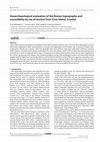
We combine geoarchaeological investigations with high-resolution airborne laser scanning (ALS) to... more We combine geoarchaeological investigations with high-resolution airborne laser scanning (ALS) topographic and airborne laser bathymetric (ALB) measurements to reassess the topography of the Roman city of Apsorus (modern Osor, northeastern Adriatic Sea, Croatia), which has generally been interpreted as important nodal point of Roman maritime traffic. Apsorus is located at the isthmus connecting Cres and Lošinj islands, which is 90 m wide at the narrowest part and dissected by a canal of supposed Roman age. A conspicuous low-lying wetland north of the city has been suggested to be a former sea passage and harbour area. Geoarchaeological coring, sedimentological analysis and radiocarbon dating suggest that this depression was already silted up with terrestrial sediments some 6,000 years ago and, especially in combination with the lower sea-level at that time, could not have been a Roman harbour. The combination of the ALS/ALB topographic data with lower sea-levels reconstructed for the Roman period challenges the traditional view which places ancient Osor on a small island and allows for new interpretations of the accessibility of Osor by sea.

Archaeologia Austriaca, 2018
Die villa rustica von Halbturn war eine der ersten römerzeitlichen
Fundstellen Österreichs, welch... more Die villa rustica von Halbturn war eine der ersten römerzeitlichen
Fundstellen Österreichs, welche in den späten 1980er und frühen
1990er Jahren mittels integrierter archäologischer Prospektion untersucht wurden. Aufgrund der Fortschritte im Bereich der nicht-invasiven Methoden großflächiger archäologischer Prospektion wurde
drei Jahrzehnte später die Landschaft der villa rustica erneut systematisch prospektiert. Dabei konnten auf einem Gebiet von mehreren Quadratkilometern archäologische Spuren verschiedener Epochen dokumentiert werden. Die Ergebnisse zeigen, dass eine großflächige integrierte Prospektion auf der Landschaftsebene selbst im Areal einer längst bekannten Fundstelle für neue Erkenntnisse sorgen
kann. Neben der besseren Datenqualität und damit einhergehenden
neuen Details zu den schon bekannten Siedlungs- und Grabplätzen
erscheint vor allem die Tatsache wichtig, dass der landschaftsarchäologische Ansatz einen völlig neuen Blickwinkel auf archäologische Hinterlassenschaften ermöglicht. Eine erste Übersicht der Resultate wird in dieser Arbeit vorgelegt.
Integrative Archaeological Prospection -- Case study Stubersheimer Alb
Archaeological Prospection. Proceedings of the 9th International Conference on Archaeological Prospection
We present the in 2010 in Vienna founded Ludwig Boltzmann Institute for Archaeological Prospectio... more We present the in 2010 in Vienna founded Ludwig Boltzmann Institute for Archaeological Prospection and Virtual Archaeology, its objectives and research programme.
The Roman Child and the Jewish Amulet
Journal of Ancient Judaism, 2010

Most people like 3D visualizations. Whether it is in movies, holograms or games, 3D (literally) a... more Most people like 3D visualizations. Whether it is in movies, holograms or games, 3D (literally) adds an extra dimension to conventional pictures. However, 3D data and their visualizations can also have scientic archaeological benets: they are crucial in removing relief distortions from photographs, facilitate the interpretation of an object or just support the aspiration to document archaeology as exhaustively as possible. Since archaeology is essentially a spatial discipline, the recording of the spatial data component is in most cases of the utmost importance to perform scientic archaeological research. For complex sites and precious artefacts, this can be a di€cult, time-consuming and very expensive operation.
In this contribution, it is shown how a straightforward and cost-eective hard- and software combination is used to accurately document and inventory some of the cultural heritage of the Cres/Lošinj archipelago in three or four dimensions. First, standard photographs are acquired from the site or object under study. Secondly, the resulting image collection is processed with some recent advances in computer technology and so-called Structure from Motion (SfM) algorithms, which are known for their ability to reconstruct a sparse point cloud of scenes that were imaged by a series of overlapping photographs. When complemented by multi-view stereo matching algorithms, detailed 3D models can be built from such photo collections in a fully automated way. Moreover, the software packages implementing these tools are available for free or at very low-cost. Using a mixture of archaeological case studies, it will be shown that those computer vision applications produce excellent results from archaeological imagery with little eort needed. Besides serving the purpose of a pleasing 3D visualization for virtual display or publications, the 3D output additionally allows to extract accurate metric information about the archaeology under study (from single artefacts to entire landscapes).

Coastal archaeology combines research in dierent environments: land surface, intertidal zone and... more Coastal archaeology combines research in dierent environments: land surface, intertidal zone and sub-aquatic area. In consequence of the use of dierent archaeological methods for these dierent physical environments, there is a border between land and underwater zones. Archaeological topographic research is mainly con€ned to land surfaces and intertidal zones. is is unfortunate since knowledge of oshore underwater topography is essential to understand the organisation and distribution of sites on islands and coastal zones. Bridging the “border” between land and water in archaeological topographic research therefore requires the development of new archaeological documentation methods. e latest technique to combine terrestrial and underwater survey is Airborne Laser Bathymetry (ALB), which utilizes a green, water-penetrating laser and therefore can be applied for mapping surfaces under shallow water. Depending on the water clarity these systems can provide a detailed characterization of the underwater topography and even be used to prospect archaeological sites under shallow water. The presented paper will discuss the actual available ALB hardware and possibilities and limitations of the bathymetric sensor technique using sample data sets in Croatian case study areas in the northern Adriatic Sea. Maritime archaeological prospection is being tested in this area to provide high quality topographic mapping for later research questions regarding the rise and decline of settlements due to the changes in the shipbuilding,
Airborne laser bathymetry – detecting and recording submerged archaeological sites from the air
Journal of Archaeological Science, 2013
A new generation of airborne bathymetric laser scanners utilises short green laser pulses for hig... more A new generation of airborne bathymetric laser scanners utilises short green laser pulses for high resolution hydrographic surveying in very shallow waters. The paper investigates its use for the documentation of submerged archaeological structures, introducing the concept of airborne laser bathymetry and focussing on a number of challenges this novel technology still has to face. Using this method, an archaeological pilot study on the northern Adriatic coast of Croatia has revealed sunken structures of a Roman villa. The results demonstrate ...
Roman graves and rural rubbish. Animal remains from the Roman cemetery of Halbturn, Austria
Anthropozoologica, 2013

Knowledge of underwater topography is essential to the understanding of the organisation and dist... more Knowledge of underwater topography is essential to the understanding of the organisation and distribution of archaeological sites along and in water bodies. Special attention has to be paid to intertidal and inshore zones where, due to sea-level rise, coastlines have changed and many former coastal sites are now submerged in shallow water. Mapping the detailed inshore topography is therefore important to reconstruct former coastlines, identify sunken archaeological structures and locate potential former harbour sites. However, until recently archaeology has lacked suitable methods to provide the required topographical data of shallow underwater bodies. Our research shows that airborne topo-bathymetric laser scanner systems are able to measure surfaces above and below the water table over large areas in high detail using very short and narrow green laser pulses, even revealing sunken archaeological structures in shallow water. Using an airborne laser scanner operating at a wavelength in the green visible spectrum (532 nm) two case study areas in different environmental settings (Kolone, Croatia, with clear sea water; Lake Keutschach, Austria, with turbid water) were scanned. In both cases, a digital model of the underwater topography with a planimetric resolution of a few decimeters was measured. While in the clear waters of Kolone penetration depth was up to 11 meters, turbid Lake Keutschach allowed only to document the upper 1.6 meters of its underwater topography. Our results demonstrate the potential of this technique to map submerged archaeological structures over large areas in high detail providing the possibility for systematic, large scale archaeological investigation of this environment.
Proceedings by Nives Doneus
The Halbturn Project: A rural Roman settlement and cemetery in Burgenland, Austria
Archaeological prospection: Fourth International Conference on Archaeological Prospection, 2001

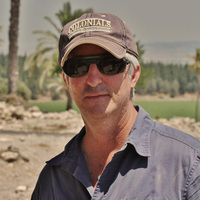
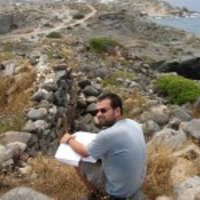
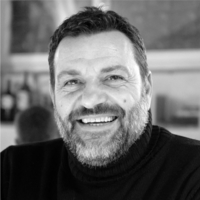
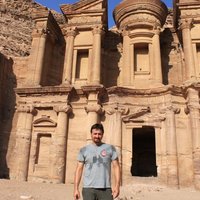

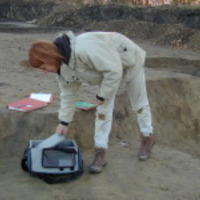




Uploads
Papers by Nives Doneus
Fundstellen Österreichs, welche in den späten 1980er und frühen
1990er Jahren mittels integrierter archäologischer Prospektion untersucht wurden. Aufgrund der Fortschritte im Bereich der nicht-invasiven Methoden großflächiger archäologischer Prospektion wurde
drei Jahrzehnte später die Landschaft der villa rustica erneut systematisch prospektiert. Dabei konnten auf einem Gebiet von mehreren Quadratkilometern archäologische Spuren verschiedener Epochen dokumentiert werden. Die Ergebnisse zeigen, dass eine großflächige integrierte Prospektion auf der Landschaftsebene selbst im Areal einer längst bekannten Fundstelle für neue Erkenntnisse sorgen
kann. Neben der besseren Datenqualität und damit einhergehenden
neuen Details zu den schon bekannten Siedlungs- und Grabplätzen
erscheint vor allem die Tatsache wichtig, dass der landschaftsarchäologische Ansatz einen völlig neuen Blickwinkel auf archäologische Hinterlassenschaften ermöglicht. Eine erste Übersicht der Resultate wird in dieser Arbeit vorgelegt.
In this contribution, it is shown how a straightforward and cost-eective hard- and software combination is used to accurately document and inventory some of the cultural heritage of the Cres/Lošinj archipelago in three or four dimensions. First, standard photographs are acquired from the site or object under study. Secondly, the resulting image collection is processed with some recent advances in computer technology and so-called Structure from Motion (SfM) algorithms, which are known for their ability to reconstruct a sparse point cloud of scenes that were imaged by a series of overlapping photographs. When complemented by multi-view stereo matching algorithms, detailed 3D models can be built from such photo collections in a fully automated way. Moreover, the software packages implementing these tools are available for free or at very low-cost. Using a mixture of archaeological case studies, it will be shown that those computer vision applications produce excellent results from archaeological imagery with little eort needed. Besides serving the purpose of a pleasing 3D visualization for virtual display or publications, the 3D output additionally allows to extract accurate metric information about the archaeology under study (from single artefacts to entire landscapes).
Proceedings by Nives Doneus
Fundstellen Österreichs, welche in den späten 1980er und frühen
1990er Jahren mittels integrierter archäologischer Prospektion untersucht wurden. Aufgrund der Fortschritte im Bereich der nicht-invasiven Methoden großflächiger archäologischer Prospektion wurde
drei Jahrzehnte später die Landschaft der villa rustica erneut systematisch prospektiert. Dabei konnten auf einem Gebiet von mehreren Quadratkilometern archäologische Spuren verschiedener Epochen dokumentiert werden. Die Ergebnisse zeigen, dass eine großflächige integrierte Prospektion auf der Landschaftsebene selbst im Areal einer längst bekannten Fundstelle für neue Erkenntnisse sorgen
kann. Neben der besseren Datenqualität und damit einhergehenden
neuen Details zu den schon bekannten Siedlungs- und Grabplätzen
erscheint vor allem die Tatsache wichtig, dass der landschaftsarchäologische Ansatz einen völlig neuen Blickwinkel auf archäologische Hinterlassenschaften ermöglicht. Eine erste Übersicht der Resultate wird in dieser Arbeit vorgelegt.
In this contribution, it is shown how a straightforward and cost-eective hard- and software combination is used to accurately document and inventory some of the cultural heritage of the Cres/Lošinj archipelago in three or four dimensions. First, standard photographs are acquired from the site or object under study. Secondly, the resulting image collection is processed with some recent advances in computer technology and so-called Structure from Motion (SfM) algorithms, which are known for their ability to reconstruct a sparse point cloud of scenes that were imaged by a series of overlapping photographs. When complemented by multi-view stereo matching algorithms, detailed 3D models can be built from such photo collections in a fully automated way. Moreover, the software packages implementing these tools are available for free or at very low-cost. Using a mixture of archaeological case studies, it will be shown that those computer vision applications produce excellent results from archaeological imagery with little eort needed. Besides serving the purpose of a pleasing 3D visualization for virtual display or publications, the 3D output additionally allows to extract accurate metric information about the archaeology under study (from single artefacts to entire landscapes).